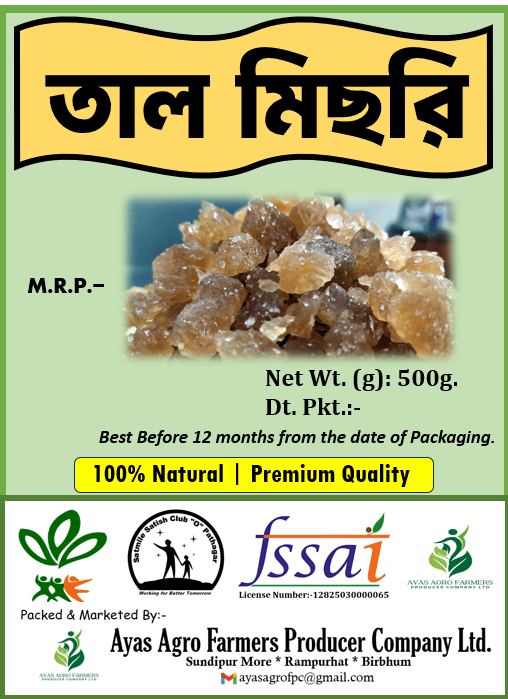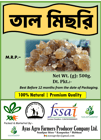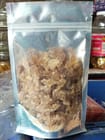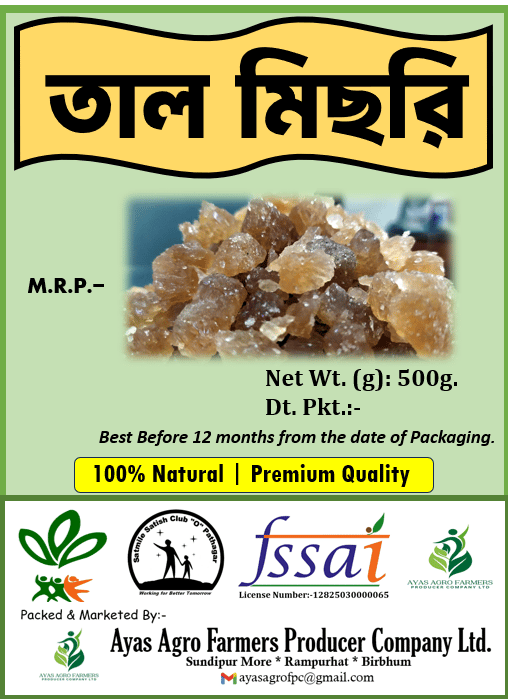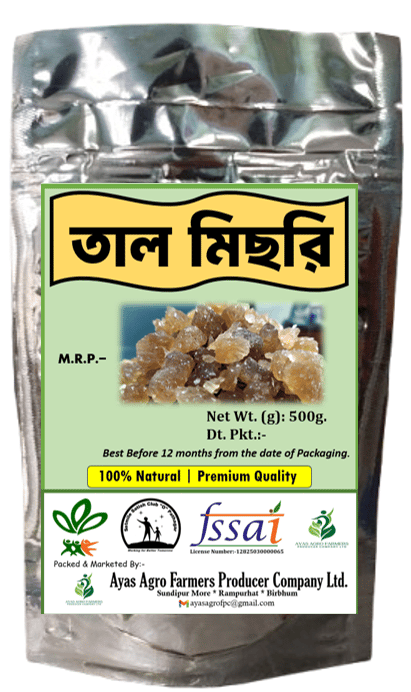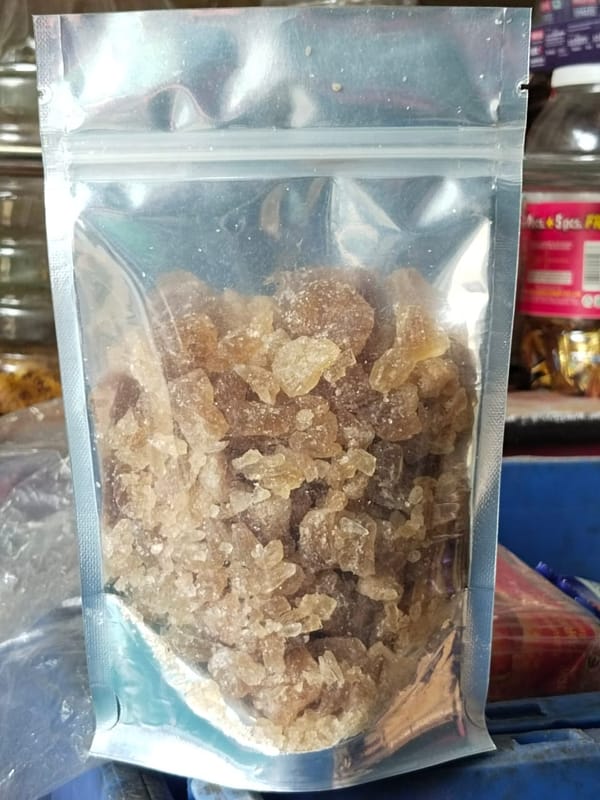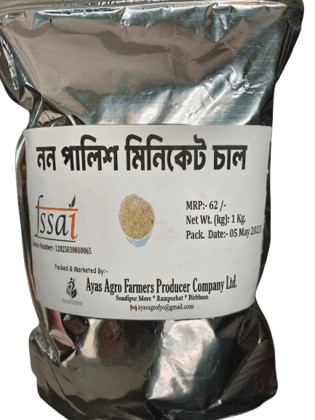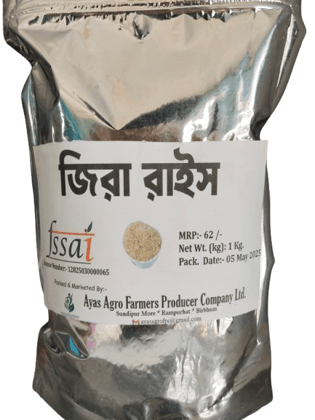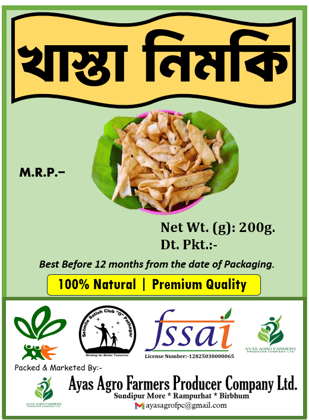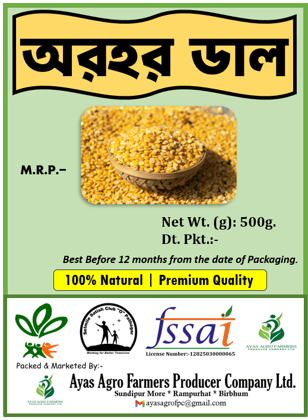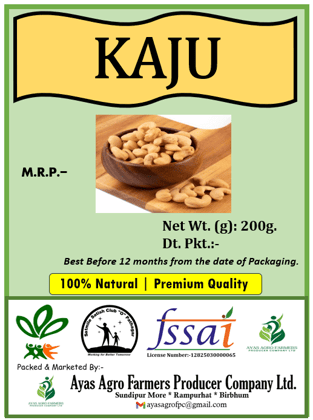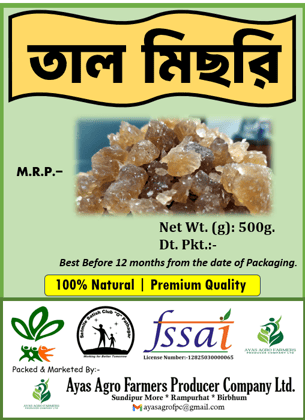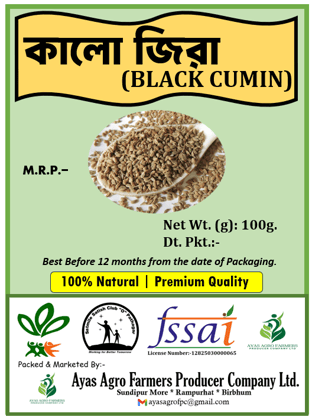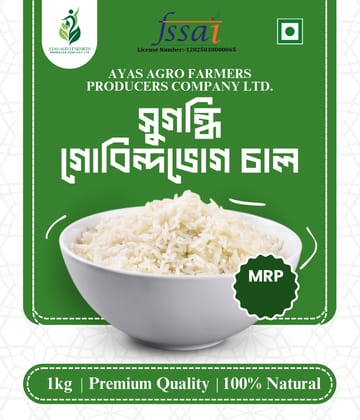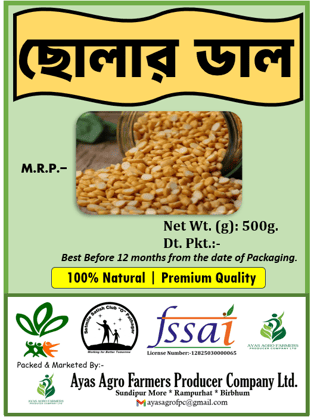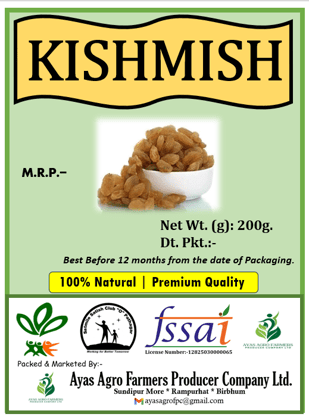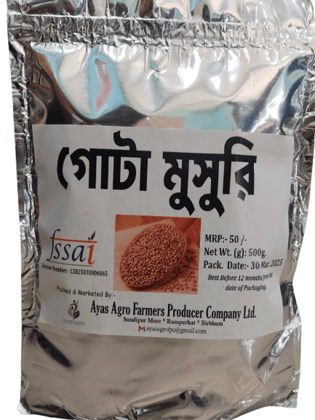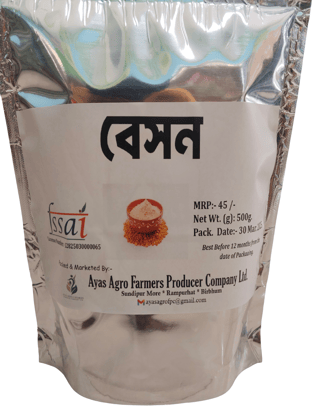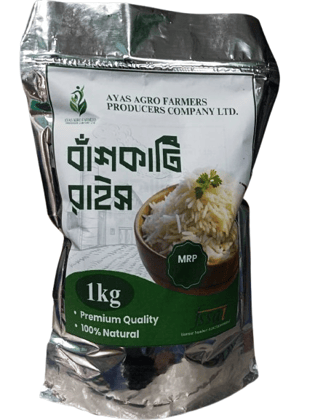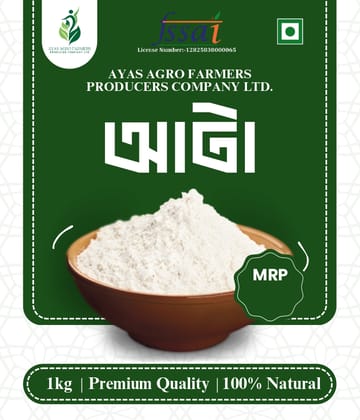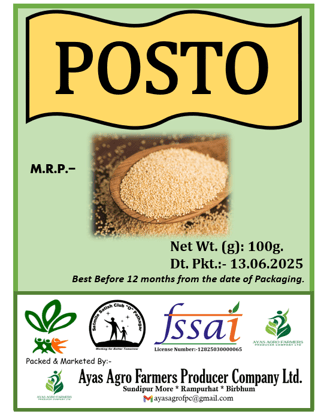"Tal Mishri" (তাল মিছরি in Bengali) is a natural, unrefined sugar, often referred to as Palm Candy or Palm Sugar crystals. It's derived from the sap of various palm trees, particularl...
Read MorePalm Sugar crystals ( TAL MISHRI) 500 GM
Key Attributes
| Country of origin | India |
|---|---|
| Net Quantity | 500 gram |
| Product Dimensions | 28L x 18W x 28H cm |
| Manufacturer or packer name | Ayas Agro Farmers Producer Company Limited |
"Tal Mishri" (তাল মিছরি in Bengali) is a natural, unrefined sugar, often referred to as Palm Candy or Palm Sugar crystals. It's derived from the sap of various palm trees, particularly the Palmyra palm (Borassus flabellifer) or sometimes the date palm. Unlike highly processed white sugar, Tal Mishri retains more of its natural nutrients and is known for its distinct taste and traditional health benefits.
Here's a detailed description:
1. What it is:
- Source: Tal Mishri is made from the sweet, clear sap collected from the flower buds of palm trees. This sap is gently boiled and then allowed to crystallize into various shapes and sizes.
- Form: It typically comes in irregular crystalline chunks, often with a brownish-golden hue, though variations exist. Sometimes it's available in powdered form as well.
- Unrefined: It's considered an unrefined or minimally processed sweetener, meaning it undergoes less chemical processing and bleaching compared to white granulated sugar.
2. Production Process (Traditional Method): The making of Tal Mishri is often a traditional and labor-intensive process:
- Sap Collection: Harvesters (known as "toddy-tappers" or "palm tappers") climb palm trees and make incisions in the flower buds to collect the sap in earthen pots. To prevent fermentation, the inside of the pots might be coated with slaked lime.
- Boiling/Reduction: The collected sap is gently boiled in large vats over a low flame. This process slowly evaporates the water content, concentrating the sugars into a thick syrup.
- Crystallization: Once the syrup reaches a certain consistency, it's poured into molds or large containers. Often, a small palm leaf or thread is placed in the center to aid crystallization. The syrup is then left undisturbed for several weeks or even months to slowly crystallize into solid, translucent chunks.
- Draining: Any remaining liquid (molasses) is drained off, leaving the solid palm candy crystals. The crystals are then carefully broken, sometimes sun-dried, and packaged.
3. Flavor and Texture:
- Flavor: Tal Mishri has a milder, less intensely sweet flavor compared to refined white sugar. It often has subtle notes of caramel or a slightly earthy, nutty taste. Its sweetness is often described as "cooling."
- Texture: It has a unique crystalline texture. It can be hard and crunchy, dissolving slowly in the mouth, or slightly softer depending on the crystallization process.
4. Nutritional Aspects: While it is still a form of sugar and should be consumed in moderation, Tal Mishri is often preferred over refined sugar due to its purported higher nutritional value:
- Minerals: It contains trace amounts of essential minerals like potassium, calcium, iron, phosphorus, zinc, copper, and manganese.
- Vitamins: It may contain small amounts of B vitamins (B1, B2, B3, B6), and potentially inositol (Vitamin B8).
- Low Glycemic Index (GI): Compared to refined sugar, Tal Mishri is often cited as having a lower Glycemic Index, meaning it causes a slower and more gradual rise in blood sugar levels. This makes it a potentially better option for individuals managing blood sugar (though diabetics should still consume it with caution and under medical advice).
- Other Compounds: It may contain small amounts of phytonutrients, polyphenols, and antioxidants.
- No Chemicals/Bleaches: Pure Tal Mishri should be free from chemicals, artificial colors, and bleaches commonly used in refined sugar processing.
5. Traditional and Ayurvedic Uses & Benefits: Tal Mishri holds a special place in traditional Indian households and Ayurvedic medicine, particularly in regions like Bengal and parts of South India. It's often associated with several health benefits:
- Cooling Properties: In Ayurveda, it's considered to have a "cooling" (Sheet Virya) effect on the body, making it popular in summer drinks and remedies for reducing body heat.
- Soothes Cough and Cold: It's a common home remedy for sore throats, coughs, and colds. Sucking on a piece of Tal Mishri is believed to soothe irritation and help clear phlegm. It's often boiled with ingredients like ginger, black pepper, and holy basil (tulsi) for cough syrups.
- Digestive Aid: It's believed to aid digestion due to its mild laxative properties and is sometimes consumed after meals with fennel (saunf) to promote digestion and freshen breath.
- Energy Booster: Being a natural sweetener, it provides a quick and sustained energy release.
- Bone Health: Due to its mineral content (calcium, potassium, boron), it's sometimes considered beneficial for bone strength.
- Good for Eye Health: In some traditional practices, it's believed to improve eyesight when consumed with other ingredients like fennel seeds and almonds.
- Beneficial for Children and Pregnant Women: It's often recommended as a natural sweetener for children and is traditionally given to new mothers.
6. Culinary Uses:
- Sweetener: Used as a natural sweetener in tea, coffee, milk, and various beverages.
- Desserts: A common ingredient in traditional Indian sweets (mithai), kheer (rice pudding), halwa, and other desserts.
- Confectionery: Enjoyed as a standalone candy or snack.
- Traditional Remedies: Essential in many homemade Ayurvedic concoctions for various ailments.
7. "Tal Mishri" vs. "White Mishri" (Rock Candy): It's important to distinguish Tal Mishri from the more common "white mishri" or "rock candy" often found in India.
- White Mishri: This is typically made from refined cane sugar syrup that is crystallized. While it also has a crystalline structure, it's generally a more processed product.
- Tal Mishri: Is specifically derived from palm sap and is considered less processed and more natural.
In summary, Tal Mishri is a traditional and highly regarded natural sweetener, particularly in Eastern India, valued not just for its subtle sweetness but also for its perceived health benefits rooted in Ayurvedic principles.
| Country of origin | India |
|---|---|
| Common name | Palm Sugar crystals |
| Net Quantity | 500 gram |
| Weight | 500 g |
| Package Dimension | 28L x 18W x 28H cm |
| Product Dimensions | 28L x 18W x 28H cm |
| Manufacturer or packer name | Ayas Agro Farmers Producer Company Limited |
| Manufacturer or packer address | PLOT NO- 904 , KHATIYAN NO- 3227, JL NO- 079,,Rampurhat |
| Manufacturing Date | JUNE |
| contact details consumer care | Ayas Agro Farmers Producer Company Limited, [email protected] |
